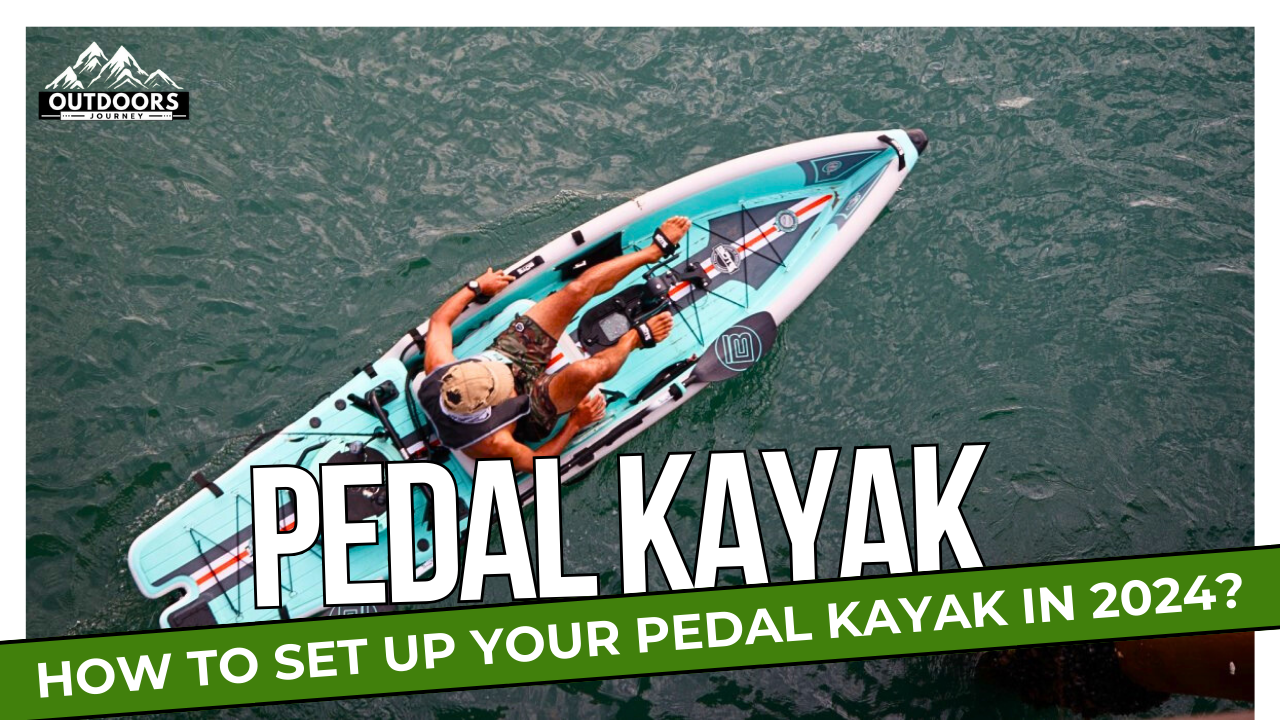It is more than just slinging your gear aboard and paddling away in a kayak fishing adventure; setting up a pedal kayak for the ultimate fishing pedal toward kayak experience. It boils down to strategy, precision, and figuring out how you can move every last bit of your kayak toward success.
Think of a time when you caught large and had whatever you needed to hand at the same moment, wouldn’t it be great? Therefore, in this guide, we will cover the basics of pedal kayak setup so you can convert your yak into a fishing machine. Some tools can not only make your trip on the water fantastic but also brush up your skills whether you’re a beginner or veteran.
Choosing the Right Pedal Kayak for Fishing
Key features to look for in a pedal kayak
There are a few key features to keep in mind when buying a pedal kayak for fishing. Stability is most important, particularly with the heavier loads we’re casting and catching (I mean that fish going 40 pounds).
Naturally, you will want to explore pedal kayaks that offer a wide base for more stability. The storage size is also significant, make sure there’s enough room for your fishing gear (tackle box and some other essential items) Bug out Bag Because the pedaling aspect of a pedal kayak is supposed to be what allows you hose-free fishing, as I discovered at that moment it’s extremely important for this drive system to work well without much issue.
Last but not least, bear in mind the ranges kayaks come in as some are aimed at angling like the Hobie kayak an incredibly well-known design with anglers.
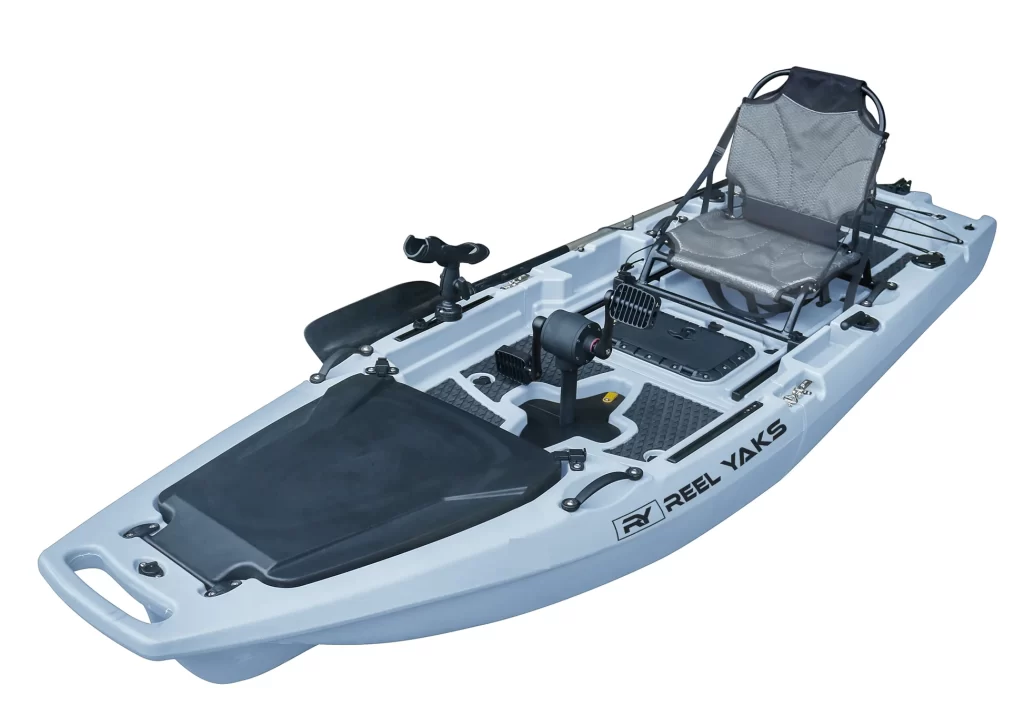
Why The Stability And Maneuverability Is Important
When a successful kayak fishing results the stability and maneuverability must be optimized. Stability is great for even rough water, and strong currents while fishing without fear of taking a swim will all be things that you want in your next kayak.
Fortunately, however, a kayak also needs to be fairly maneuverable while out on the water due to its relatively small size allowing hunter or fisherman access to shallow areas where prey can hide. Kayaks such as the Hobie kayak are great at providing a little bit of both and make them perfect for different water conditions.
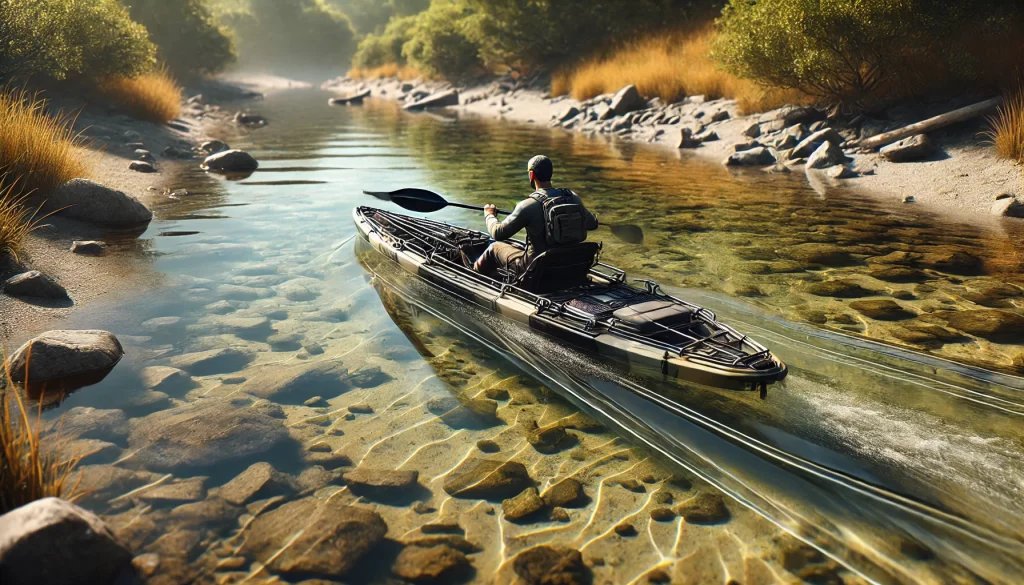
Comparing models: which best fits your fishing style?
There are many pedal kayaks for sale, each made with certain types of fishing in mind. So, for a better example: if you are into saltwater fishing; the Hobie kayak paired with their water jet propulsion system!
If you’re an angler who prefers inshore kayak fishing, then a model with a conventional pedal drive could be better for your tastes. It will depend on your fishing style, the type of species you fish, and where you go out while fishing.
Organizing Your Fishing Gear
Organization of tackle boxes and fishing rods
Another thing to keep in mind is ease of access and management when it comes time to organize fishing tackle. Your tackle boxes will be within easy reach but locked in to avoid having them slide around. Make sure you incorporate Flush mount rod holders for your fishing rods.
Not only do rod holders keep things uncluttered, but they also free up your hands for other kayaking pursuits and improve the overall experience of kayak fishing.
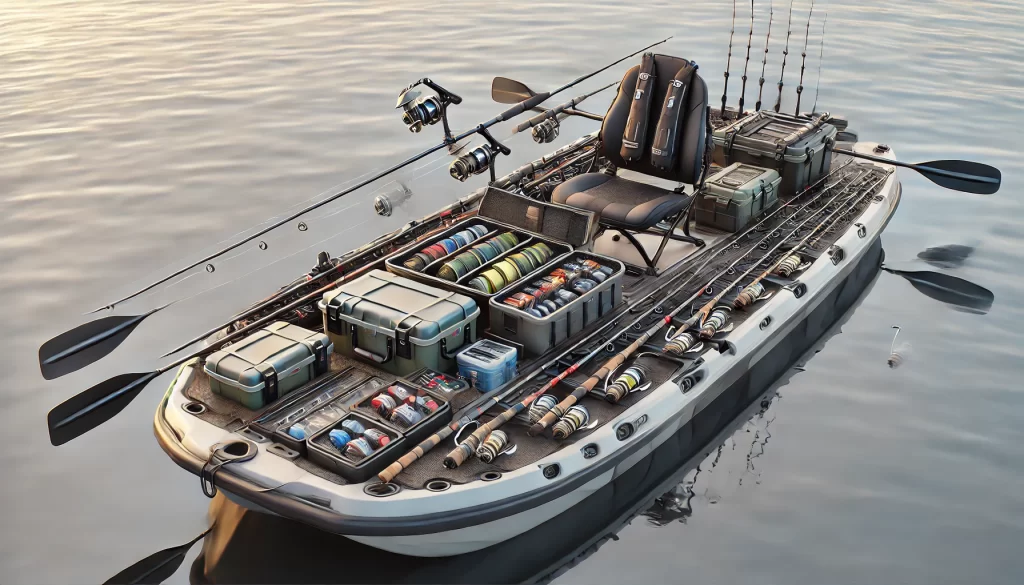
Installing rod holders and gear tracks for easy access
Rod holders, gear tracks, and much more can be installed to keep your essentials easy to find. This particular kayak comes with flush mount rod holders (presumably for better space savings) as well as the highly popular gear tracks that let you adjust where your gear will be placed.
For maximizing your storage and overall kayak fishing pleasure, this way is the best to install everything.
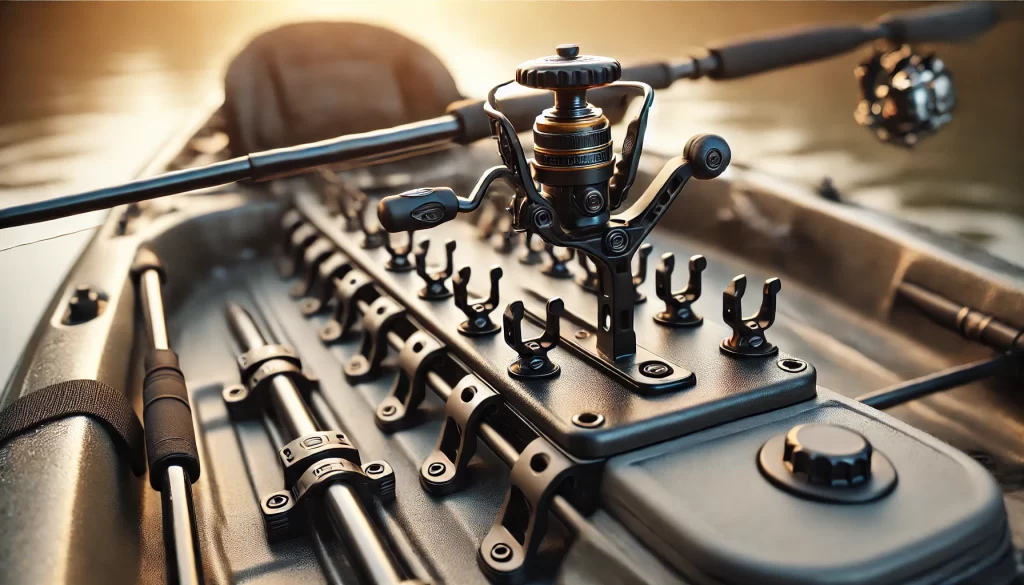
Managing space for live bait and coolers
Space is always a problem with kayaks, which we quickly learn to manage better. Designate live bait and cooler areas so they are in a place people can access, but do not pose an obstacle.
Having a pedal kayak with great storage volume will help you as this most likely means that it is spacious enough to allow for all of the pedals, and paddles if necessary. Ensure you have set it up where you can easily access it when your moment in need is right there and then.
Installing Electronics On Your Kayak
How To Mount A Fish Finder: Best practices
If you want to get the best fishing spot, Mounting a Fish Finder is not optional. Place the fish finder in a good position to see without blocking your paddling or fishing movements. Attach fish finder mounts to the kayak and secure them with regular wear tape. Getting the mount positioned correctly should keep you from not only seeing fish… but also high-stakes pools of water beneath.

Finding your way via GPS and mapping tools
Navigation and tracking fishing spots, and GPS mapping tools are your best friend You can keep track of where you are, plan your trip, and save the place on the map to always get back there. Before leaving the shoreline, ensure your GPS unit is properly mounted and that you have easy access to it — this becomes especially important in windy or rough water conditions.
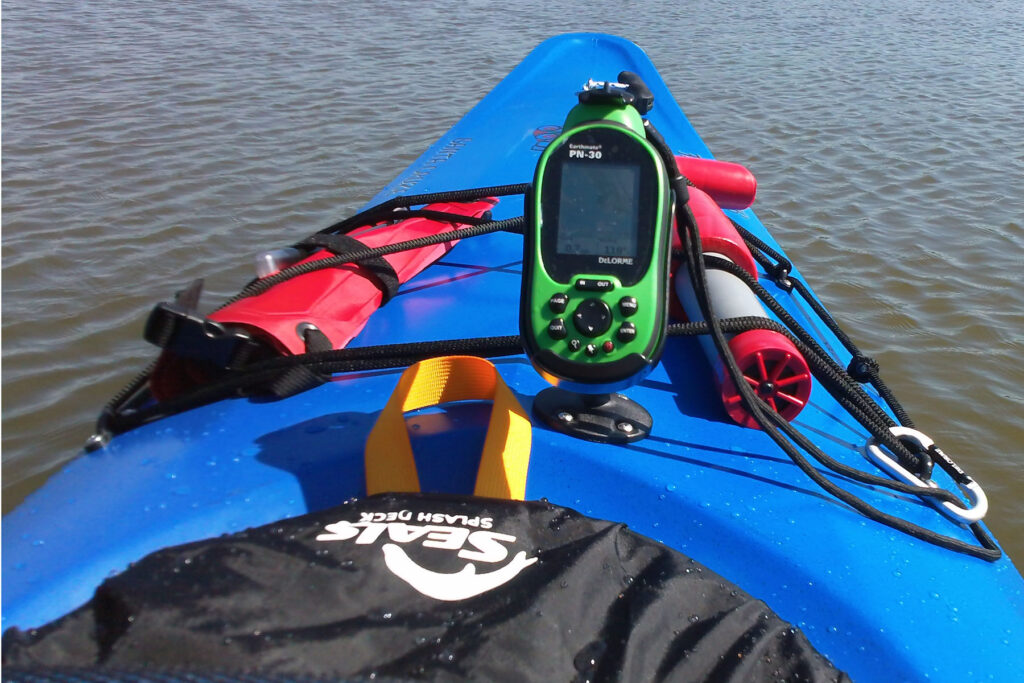
Much longer distances are hell on electronics
This is one of the issues with an electronic footprint on a kayak, and also relevant as regards power consumption for long-distance paddle trips.
Make sure you have a solid battery system to run all devices including fish finders and GPS units. For kayak anglers using Minn Kota and other high-performance battery brands, you have dependable compact power sources.
Bring extra power Most of us are reliant on the battery life of our tablets and smartphones. Do not risk being caught without juice by carrying a backup battery pack or portable power bank in case you need it to revive your dead electronics at some point throughout average day use for 10 hours
Improving Stability and Comfort
How to Balance Your Kayak for More Stability?
For stability purposes, balance your weight within the kayak. So, putting heavier things like coolers and tackle boxes further in the center. Keeping the seating position adjusted can also balance your kayak and help to stabilize it, especially in rough water. This is especially key for the seasoned kayak angler who will frequently — if not primarily — be fishing while standing.

Comfortable seating and padding installation
You want to have the most possible comfort in a kayak because fishing can take some time. If you find yourself a little worn out after your first outing consider getting a comfy seat that the backrest can also be easily adjusted and suitable padding as this makes such a difference.
Look for seats that provide enough back support to keep you well so the travel becomes a less tiring experience. When you add some extra padding to the seat and backrest, it is just a little more comfort in which you can truly focus on fishing.
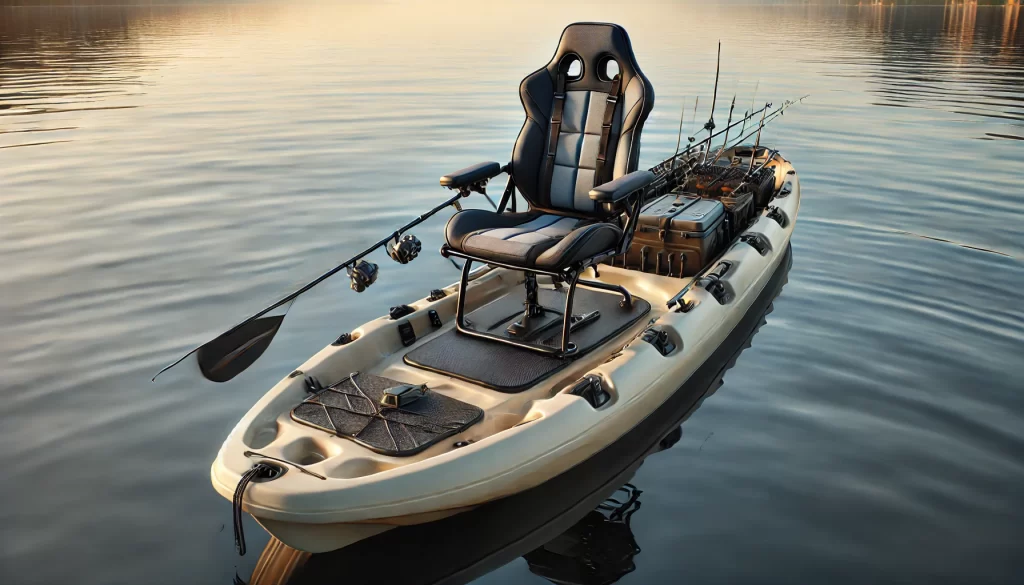
Adjusting pedals and straps for long fishing sessions
Proper placement of the pedals and straps are key, to ensure comfortable feet for long fish. Make sure the pedal system is within an appropriate range and will encourage smooth pedaling without causing strain.
Retainers and straps should be snug but not tight, keeping a fine balance of control over comfort.
Final Safety Tips & Adjustments
Safety Items You Should Carry On Board
When it comes to setting up your kayak for a fishing trip, safety should always come first. Bring along the following required gear: Life Jacket — PFDs must be worn at all times. Life jacket / inflatable lift vest, especially if you come from deeper or rougher waters. Take along paddle leases and safety whistles with you, as well as some basic first aid kits or signaling devices. These things keep you ready for an emergency.

Doing a pre-launch checklist
Relatively similar to something that might be found in the airline industry, a pre-launch checklist is necessary before launching.
This means confirming that all equipment is properly stowed, Fish Finder and GPS systems are operational, and the paddle holder on a PFD(personal floatation device) actually holds Please, have your anchor trolley and kayak anchored up. Double-check that your life jacket is securely fitted and go over the day’s fishing itinerary.

Adapting to changing water and weather patterns
Water conditions can turn on you in a matter of minutes, so it pays to be versatile. A standard setup might work for calm waters, however when there are strong currents, shallow water, or Windy conditions extra precautions need to be taken. This might be just tightening up your gear, using an anchor pin to hold a spot, or even making sure you are ready for rough weather.
Summary
You know how to rig your pedal drive kayak for the best fishing possible, now get out there and crush it on the water! So, get the right kayak and properly organized fishing gear to create your boat with properly installed electronics; provide a stable platform as well as security to enjoy an amazing day of fishing.
As we all know, preparation is invaluable; every little detail right from the placement of your tackle boxes to how strategically you balance out your kayak will decide if it is going a more productive and satisfying day on the water. Now go out there and make these tips work for you, enjoy all those days wasted by catching big fish & making memories that will last a lifetime!
Frequently Asked Questions about Pedal Kayaks(FAQ)
-
What is the best pedal kayak for fishing?
- It is also often called the Hobie fishing kayak, as it has become one of those kayaks that many anglers will point to first before considering any other because of its superior stability and function.
- How Do I Make My Pedal Kayak More Stable?
- Help increase stability by making sure weight is distributed evenly in the kayak, positioning yourself properly when seated, and securing gear.
-
What safety gear should I always have on my kayak?
- You should always wear a personal flotation device (PFD), life vest, paddle leash, and safety whistles. Their importance is vital for your safety on the water.
- What to Look for in a Pedal Kayak Fish Finder?
- If you are in the market for a Fish Finder, keep an eye out for screen size, resolution, and compatibility with your kayak setup. However, the most important thing is that it is properly mounted and gives you accurate readings.
-
What are the best accessories for organizing fishing gear on a kayak?
- Through the multifunctional accessory system, you stay organized with rod holders, gear tracks, and Flush mount rod holders. They keep everything within easy reach and maximize your storage capacity.
- Are pedal kayaks good in rough water?
- Because as long as they are designed to handle rough water, pedal kayaks can be used (with limitations) in even the roughest waters. You need to adapt your arrangement and take proper safety precautions.
- How to Take Care of the Electronics on My Pedal Kayak?
- Ensure your battery levels are always in check, that all connections remain sound, and that devices such as the Fish Finder and GPS are kept dry with good mounting.
-
Is a Hobie kayak worth the investment for fishing?
- Absolutely! The Hobie kayak is known for its durability, innovative features, and the ability to handle various fishing styles. It’s a popular option among experienced kayak anglers.
-
What should I include in my pre-launch checklist?
- The pre-launch checklist Ensures that all gear is strapped down, safety equipment is in place, electronics are on and everything with the fishing plan has been double-checked.
Source Links
- REI: How to Choose a Fishing Kayak
- https://www.rei.com/how-to-choose-a-kayak-for-fishing.html
- Hobie Kayaks: Fishing Kayaks Overview
- https://fishing.hobie.com/
- Outdoor Gear Lab: Best Fishing Kayaks of 2024
- https://www.outdoorgearlab.com/topics/paddling/best-kayak
- Kayak Angler Magazine: How to Rig Your Kayak for Fishing
- https://kayakanglermag.com/tactics-skills/rigging/river-fishing-rigging-ultimate-guide/
- Bass Pro Shops: Kayak Fishing Gear Essentials
- https://www.basspro.com/shop/en/kayaks
